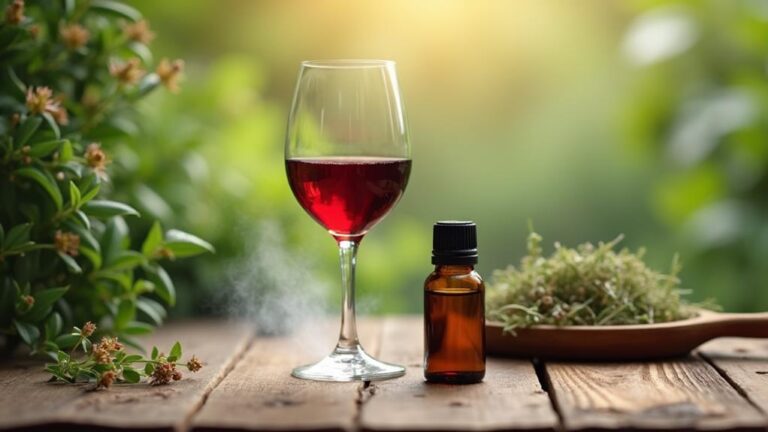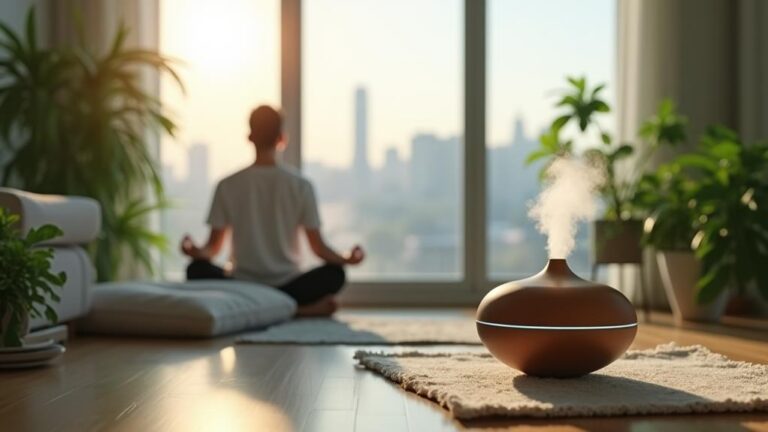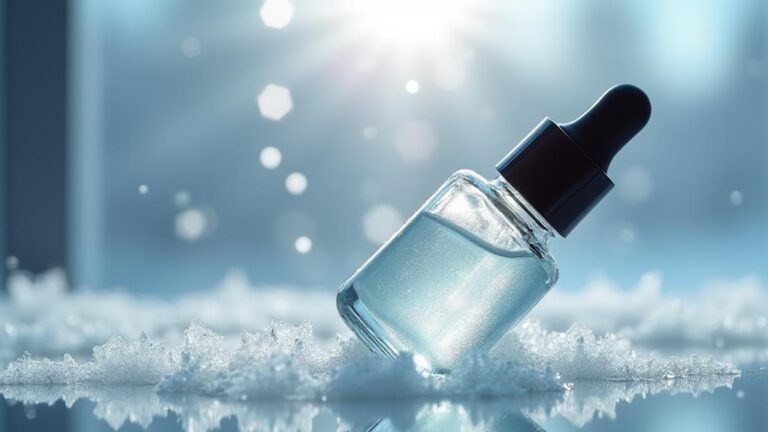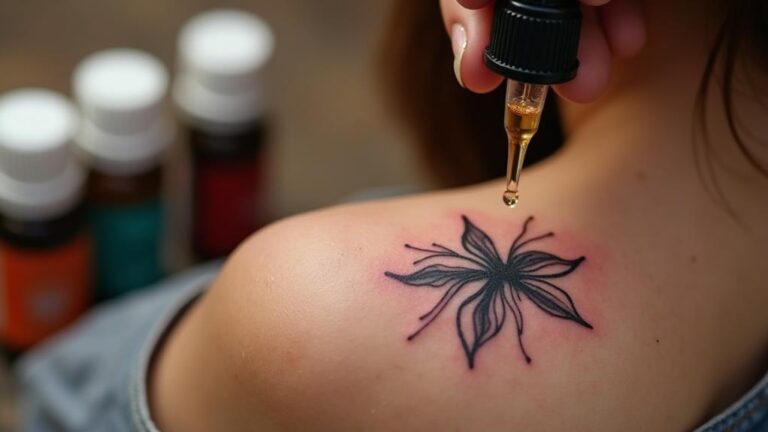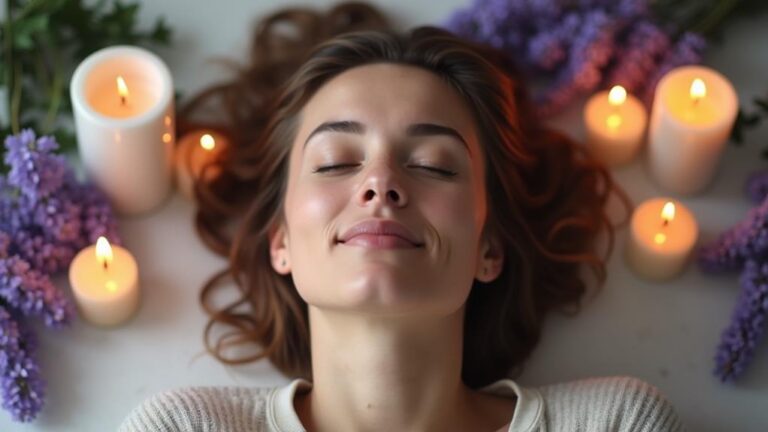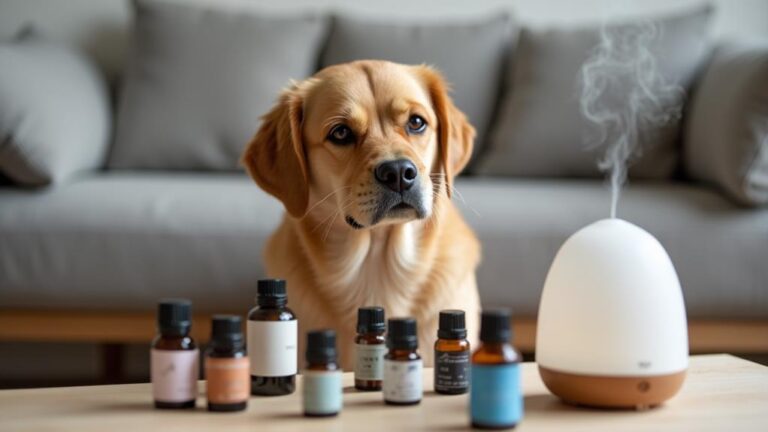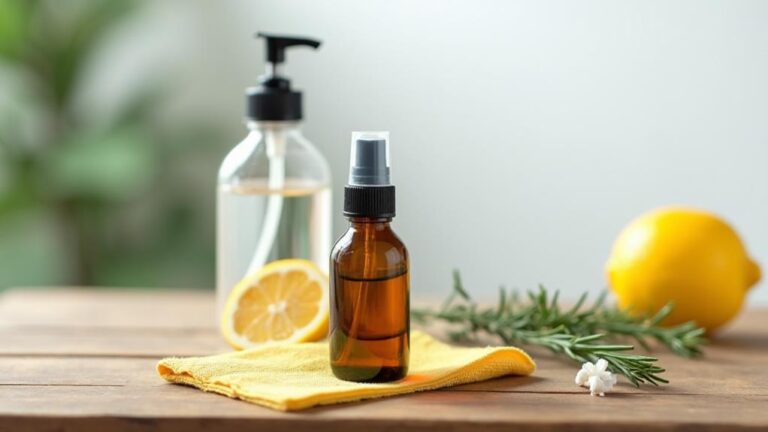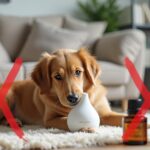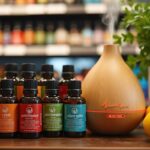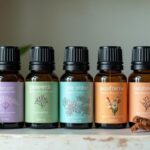As you set out on the journey of crafting your own essential oil blends, it’s crucial to navigate the process with care, lest you risk compromising their potency and, more importantly, your well-being. You’re likely aware that essential oils can be a powerful tool for enhancing your health, but are you confident in your ability to combine them safely? By following a few simple guidelines, you can release the full potential of essential oils and create blends that are tailored to your specific needs. But where do you start, and what precautions should you take to guarantee your creations are both effective and safe?
Key Takeaways
- Understand essential oil properties, including scent, therapeutic benefits, and safety considerations, to create effective and safe blends.
- Measure essential oil volumes precisely using pipettes or measuring devices, and calculate the right essential oil ratios to achieve desired effects.
- Choose a carrier oil that complements the benefits of essential oils, and consider its viscosity, shelf life, and stability when creating a blend.
- Perform patch testing to check for skin reactions, allergic responses, or other adverse effects, and review safety guidelines to avoid essential oil errors.
- Consider individual health needs, such as age and sensitivity, and investigate potential interactions with essential oils and medications before creating a blend.
Understanding Essential Oil Properties
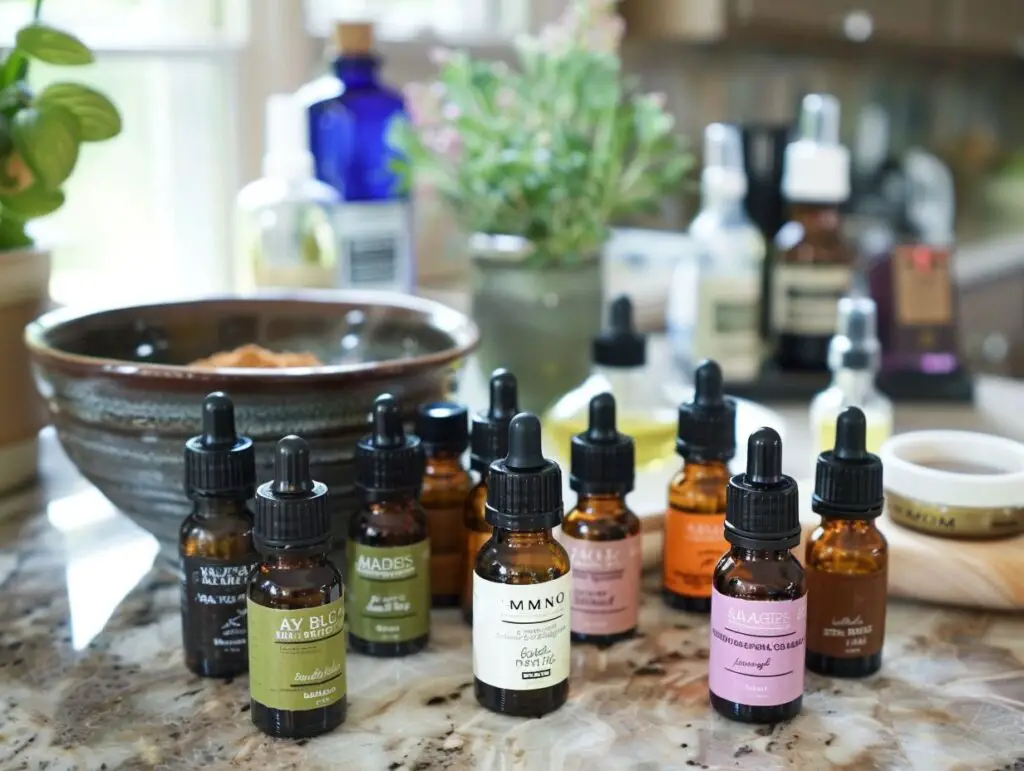
Understanding the properties of each oil will help you create a blend that’s both effective and safe to use.
You’ll be able to identify potential interactions between oils and avoid using oils that may cause adverse reactions. For example, some oils may be too potent or irritating when used in high concentrations, while others may be too mild and require higher concentrations to achieve the desired effect.
Choosing Compatible Essential Oils
When mixing essential oils, you’ll need to choose oils that complement each other with regard to their properties and effects.
To guarantee compatibility, you’ll perform oil compatibility checks, which involve evaluating factors like scent, therapeutic benefits, and safety considerations.
Oil Compatibility Checks
In the domain of mixing essential oils, compatibility checks are crucial for creating harmonious blends that enhance their therapeutic benefits and minimize potential risks.
You must verify that the essential oils you plan to blend are compatible with each other to avoid adverse oil interactions. To do this, you’ll need to research the properties and characteristics of each essential oil, including their chemical composition, potency, and potential allergens or irritants.
When evaluating oil interactions, weigh the blending principles that govern how different essential oils interact with each other.
For example, some essential oils may enhance or counteract the effects of others, while others may cause skin irritation or allergic reactions when combined.
You’ll also need to weigh the concentration and ratio of each essential oil in the blend, as well as any potential synergies or antagonisms between them.
By carefully evaluating these factors, you can create safe and effective essential oil blends that achieve your desired therapeutic goals.
Remember to always consult with a qualified healthcare professional or certified aromatherapist if you’re unsure about the compatibility of certain essential oils.
Blending Essential Oil Groups
When choosing compatible essential oils, consider the following groups:
1. Fragrance Families: Group oils with similar scent profiles, such as floral, citrus, or woody, to create a cohesive blend.
For example, combining lavender and chamomile essential oils creates a calming floral blend.
2. Therapeutic Properties: Combine oils with similar therapeutic benefits, such as anti-inflammatory or antimicrobial properties, to enhance their individual effects.
For example, blending tea tree and eucalyptus essential oils creates a potent antimicrobial blend.
3. Chemical Compositions: Group oils with similar chemical compositions, such as monoterpenes or esters, to create a balanced blend.
For example, combining lemon and bergamot essential oils creates a revitalizing and uplifting blend.
Checking Safety Precautions
You’re about to start mixing essential oils, but before you do, it’s imperative to check safety precautions.
Reviewing safety guidelines is pivotal to avoid essential oil errors that can lead to skin irritation, allergic reactions, or other adverse effects.
Start by checking the recommended usage rates for each essential oil you plan to use.
Some oils can be highly concentrated and may cause skin irritation if used in excess.
Always refer to the recommended dilution rates provided by the manufacturer or a trusted essential oil resource.
Next, consider any potential interactions between the essential oils you’re mixing.
Certain oils can enhance or counteract each other’s effects, so it’s necessary to research any potential interactions before mixing.
Measuring Essential Oils Correctly
When mixing essential oils, you’ll need to measure them accurately to achieve the desired effects.
This involves calculating the right essential oil ratios, measuring oil volumes precisely, and using pipettes accurately to avoid errors.
Essential Oil Ratios
Mixing essential oils requires precision, and measuring them correctly is pivotal to achieving the desired therapeutic benefits and avoiding potential adverse effects.
You’ll need to understand the principles of essential oil ratios to create effective blends. Oil proportions play a key role in determining the overall effect of your blend.
When blending essential oils, you should follow these principles:
- Start with a dominant oil: Choose an oil that will make up the majority of your blend, usually 60-80% of the total volume.
- Add secondary oils: Select oils that will enhance the benefits of your dominant oil, typically 10-30% of the total volume.
- Use accent oils sparingly: Add oils with strong fragrances or potent properties in small amounts, usually 5-10% of the total volume.
Measuring Oil Volumes
Here’s a helpful conversion guide:
| Unit | Equivalent | Drops |
|---|---|---|
| 1 mL | 0.033 fl oz | 20-30 drops |
| 1 tsp | 5 mL | 100-150 drops |
| 1 oz | 30 mL | 600-900 drops |
| 1 dram | 3.7 mL | 75-110 drops |
| 1 bottle (5mL) | 0.17 fl oz | 100-150 drops |
When measuring essential oils, remember that volume accuracy is key. Always use a clean and dry measuring device, and avoid contaminating the oil or the measuring tool. By following these guidelines and using the conversion chart above, you’ll be able to accurately measure essential oils and create effective blends.
Using Pipettes Accurately
You’ve mastered the art of measuring essential oils in various units, and now it’s time to focus on the tool that helps you achieve accuracy: the pipette.
A pipette is a pivotal instrument in guaranteeing precise measurements, and its accuracy depends on proper calibration and maintenance.
To guarantee accurate measurements, follow these steps:
1. Calibrate your pipette regularly: Pipette calibration is essential to guarantee accurate measurements.
Check the manufacturer’s instructions for calibration procedures and recommended frequency.
2. Clean and store your pipette properly: Pipette maintenance is indispensable to prevent contamination and guarantee accurate readings.
Clean your pipette with soap and water, and store it in a dry place.
3. Check for wear and tear: Regularly inspect your pipette for signs of wear and tear, such as corrosion or damage to the tip.
Replace it if necessary to maintain accuracy.
Selecting Carrier Oils
When creating a blend of essential oils, selecting the right carrier oil is crucial, as it can affect the overall performance and skin tolerance of the final product.
You’ll want to choose a carrier oil that complements the benefits of your essential oils. Carrier oil benefits include diluting the potency of essential oils, enhancing skin absorption, and providing moisturizing properties.
Different carrier oils have distinct characteristics, such as oil viscosity differences.
Thicker oils like coconut or sweet almond oil are often used for massage blends, while lighter oils like jojoba or grapeseed oil are better suited for facial applications.
You should consider the viscosity of the carrier oil and how it will affect the overall consistency of your blend.
Additionally, consider the shelf life and stability of the carrier oil, as some oils can become rancid over time.
Creating Essential Oil Blends
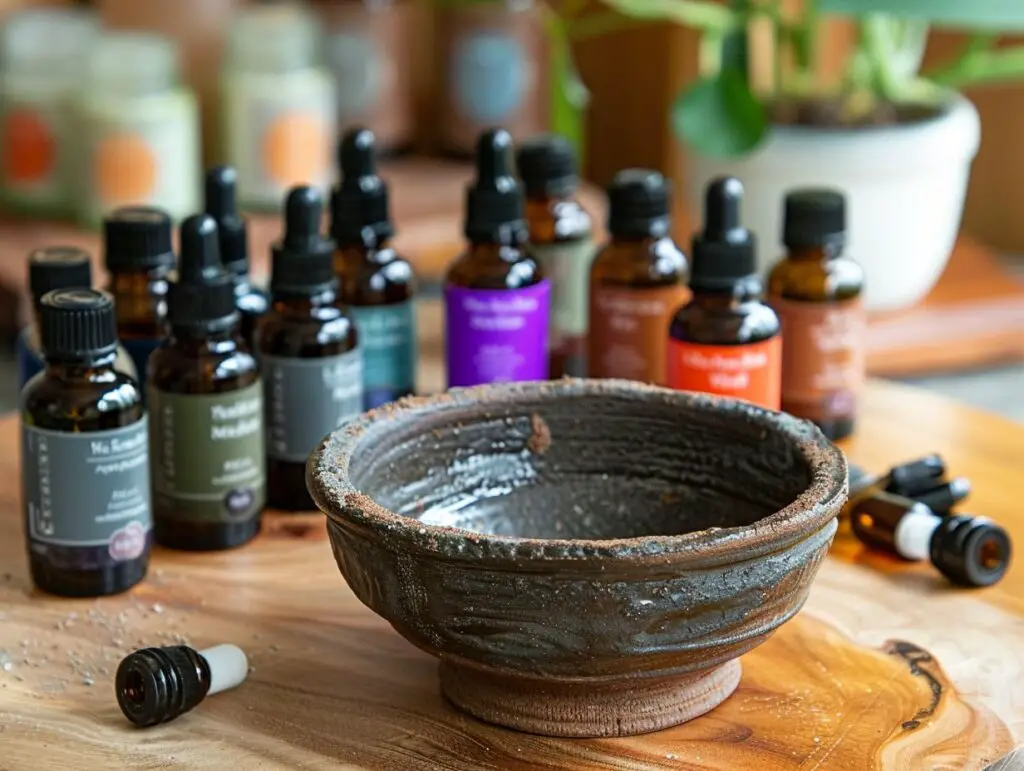
Now that you’ve selected the right carrier oil for your blend, it’s time to combine your essential oils in a way that achieves your desired benefits.
This is where the art of blending comes in, and it’s crucial to weigh the concept of Essential Oil Synergy. Synergy occurs when individual essential oils work together to produce a more profound effect than they’d alone.
To create a well-rounded blend, follow these guidelines:
- Start with a theme: Determine the purpose of your blend, such as relaxation, energy, or skin health. This will help you choose essential oils that work together to achieve your goal.
- Choose oils that complement each other: Select essential oils that share similar properties or benefits, but also offer unique characteristics to enhance the blend.
- Balance top, middle, and base notes: Combine essential oils with different evaporation rates to create a harmonious blend that smells pleasant and lasts longer.
Performing Skin Patch Tests
Before applying your newly created essential oil blend to your skin, it’s vital to perform a skin patch test to guarantee you don’t have any adverse reactions. Patch testing is a simple yet effective way to confirm you’re not allergic to any of the oils in your blend.
To conduct a patch test, apply a small amount of the blend to a discrete area of your skin, such as behind your ear or on the inside of your wrist. Wait 24-48 hours to see if any skin reactions occur.
| Area | Reaction | Action |
|---|---|---|
| Behind the ear | Redness, itching, or swelling | Discontinue use of the blend |
| Behind the ear | No reaction | Blend is likely safe to use |
| Inside the wrist | Redness, itching, or swelling | Discontinue use of the blend |
| Inside the wrist | No reaction | Blend is likely safe to use |
Considering Individual Health Needs
When creating a blend, you’ll want to ponder your individual health needs, including your age and sensitivity to certain oils.
If you’re taking medications, you’ll also need to investigate potential interactions with essential oils.
Age and Sensitivity
Take into account your individual health needs, as they play a significant role in determining how you respond to essential oils.
Age and sensitivity are pivotal factors to take into consideration when mixing essential oils.
As you navigate the world of essential oils, recognizing that your body’s response may vary depending on your age and individual sensitivities is imperative.
When it comes to age, there are specific considerations to keep in mind:
1. Pediatric concerns: Essential oils can be particularly potent for children, so exercising prudence when using them is paramount.
Always dilute essential oils in a carrier oil, and consult with a healthcare professional before using them on children under six years old.
2. Age restrictions: Certain essential oils aren’t suitable for people under a specific age.
For example, peppermint oil isn’t recommended for children under three years old due to its high menthol content.
3. Sensitive skin: If you have sensitive skin, you may need to start with smaller amounts or dilute essential oils further to avoid any adverse reactions.
Medication Interactions
Many prescription medications can interact with essential oils, affecting their efficacy or even causing adverse reactions. As you consider mixing essential oils, it’s vital to think about your medication regimen.
You may not realize that certain essential oils can amplify or diminish the effects of your medications, leading to unintended consequences.
If you’re taking hormone replacement therapy, for instance, certain essential oils like clary sage and geranium can affect estrogen levels. Similarly, if you’re on blood thinners, essential oils like wintergreen and birch can increase the risk of bleeding.
It’s imperative to research potential interactions between your medications and the essential oils you plan to use.
Consult with your healthcare provider or a certified aromatherapist to discuss your medication list and essential oil usage. They can help you identify potential interactions and suggest alternative essential oils or usage guidelines to guarantee safe and effective use.
Storing Essential Oil Mixtures
Having crafted your essential oil mixtures, you’re now faced with the essential task of storing them properly to maintain their potency and aroma.
Proper storage is imperative to prevent oxidation, contamination, and degradation of the oils.
To store your essential oil mixtures safely, follow these guidelines:
1. Use an essential container: Choose a dark glass bottle with a tight-fitting lid to protect the oils from light and air.
Amber or blue glass bottles are ideal as they filter out UV light.
2. Keep them on oil shelves: Designate a specific area, such as a closet or shelf, to store your essential oil mixtures.
This will help you keep them organized and out of reach of children and pets.
3. Store them in a cool, dry place: Avoid storing essential oil mixtures in areas with high temperatures, humidity, or exposure to direct sunlight.
A room with a consistent temperature between 60°F to 70°F (15°C to 21°C) is ideal.
Labeling and Dating Blends
Properly labeling and dating your essential oil blends is essential for maintaining their integrity and ensuring you use them effectively. You’ll want to keep track of what’s in each blend, how much of each oil is used, and when you created it. This information is pivotal for reproducing a blend or troubleshooting any issues that may arise.
To stay organized, create a system for labeling and dating your blends. This can be as simple as using stickers or labels with the following information:
| Label Information | Example |
|---|---|
| Blend Name | Relaxation Blend |
| Date Created | 2022-02-15 |
| Oils Used | Lavender, Chamomile, Bergamot |
| Ratio of Oils | 2:1:1 |
| Intended Use | Stress Relief |
Frequently Asked Questions
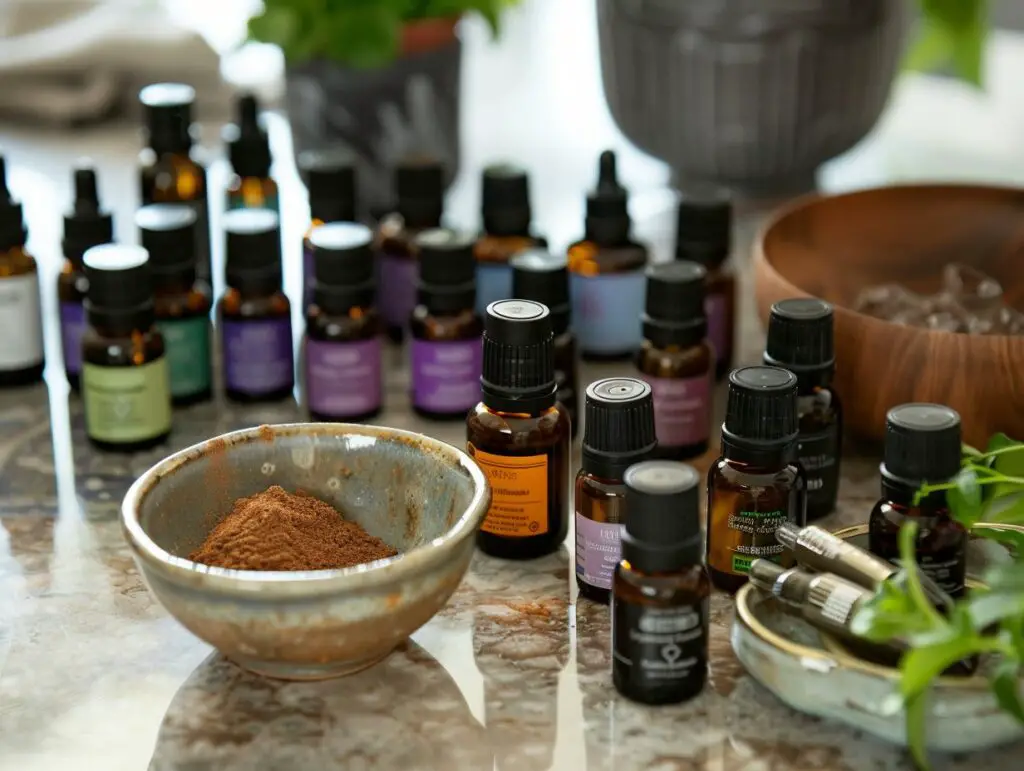
Can I Mix Essential Oils With Other Natural Remedies Like Herbs or Supplements?
When exploring aromatherapy synergy, you can combine essential oils with herbal infusions or supplements, but it’s vital to research potential interactions and consult a healthcare professional to guarantee safe and effective blending for your specific needs.
Are Essential Oil Blends Safe to Use on Pets or Animals?
When considering essential oil blends for pets, you should exercise caution, as pet allergies and changes in animal behavior can occur; always consult with a veterinarian before using oils on animals to guarantee their safety and well-being.
Can I Use Essential Oils in Cooking or as Food Additives?
You can use essential oils as flavor enhancers in cooking, but it’s vital to choose food-grade oils and follow safe guidelines, as some oils can be toxic if ingested; explore culinary uses and recipes that highlight their unique flavors and aromas.
How Long Do Essential Oil Blends Remain Effective or Potent?
You’ll find that essential oil blends remain effective for 1-3 years, depending on storage conditions, quality control, and degradation factors, but it’s vital to check expiration dates and follow proper storage to maintain shelf life.
Can I Reuse or Recycle Essential Oil Bottles and Containers?
You’re a master of essential oil blending, but now you’re wondering if you can reuse those precious bottles! Yes, you can, but don’t skip the vital step of thorough bottle cleaning methods and container sterilization to guarantee a clean slate for your next blend!
Conclusion
By following these 10 steps, you’ll create effective and safe essential oil blends that cater to your unique health needs. Did you know that 75% of essential oil users don’t dilute their oils properly, risking skin irritation? Avoid being part of this statistic by always diluting your essential oils in a carrier oil. With these guidelines, you’ll be able to mix essential oils like a pro, ensuring a harmonious blend that benefits your body and mind.



